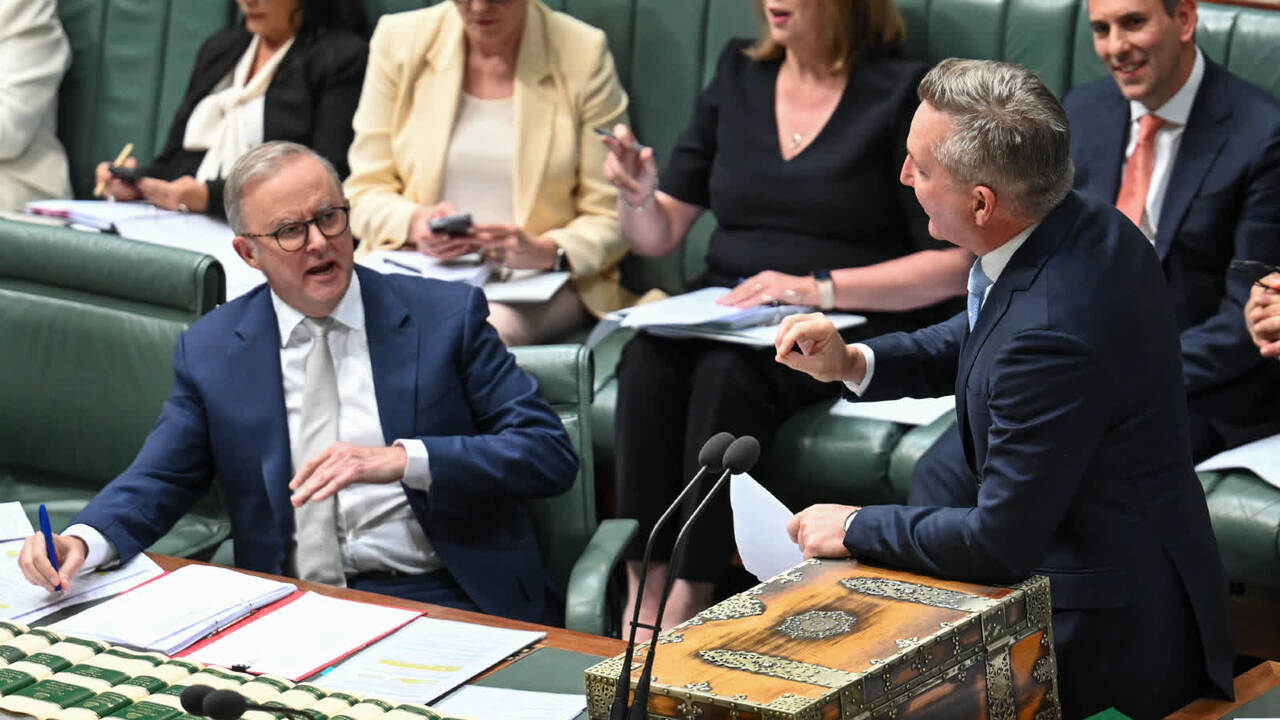NSW’s Bayswater, Eraring coal plant fresh issues trigger new power crunch fears
NSW’s two largest coal power stations are running at reduced capacity just as energy demand is expected to surge.

NSW faces a heightened risk of blackouts and upward pressure to prices this week as two of the state’s largest coal power stations suffer another round of issues.
The developments underscore the unreliability of Australia’s ageing coal fleet.
The Coalition has said it will run the plants for longer to allow time to build seven nuclear power stations.
Meanwhile, it highlights the inadequate amount of renewable energy in the system despite the insistence of the federal Labor government that its plan to place zero emission sources at the heart of Australia’s grid is working.
Temperatures in NSW are set to rise on Tuesday, extending a period of hot weather across the state, but both AGL Energy’s Bayswater and Origin Energy’s Eraring coal power stations are running at below capacity with one unit at both shut down last week, The Australian understands.
Bayswater, which was only recently restored to full capacity, has another tube leak. A tube leak was responsible for one of the station’s units being offline earlier this month.
The Australian understands Bayswater is likely to remain running at reduced capacity until the weekend or even early next week.
Eraring, NSW’s largest electricity producer – generating around 25 per cent of the state’s power – elected to take one of its four units offline to deal with technical problems that could have escalated and affected other units.
A spokeswoman for Origin said staff are working hard to restore operations.
“Unit 2 is expected to return to service later this week, and Eraring’s three other units remain in service,” the spokeswoman said in a statement.
“These are large, complex and ageing plants and it is expected that they will require ongoing maintenance so they can continue to operate safely and support security of supply in the market, particularly through peak demand periods.”
Eraring had only just returned to full capacity after Origin was forced to shut down another unit after discovering issues when it went to restart it after months-long maintenance.
The reduction of NSW’s coal capacity comes at a particularly inopportune time for the grid as demand is expected to jump as temperatures continue to remain elevated.

The Australian Energy Market Operator – the agency tasked with ensuring grid stability – on Monday issued an alert, insisting that on current supply offers – the market has insufficient reserves between 3pm and 7.30pm.
The alert coincides with when solar generation in Australia begins to ebb.
Australia has the world’s highest proliferation rate of rooftop solar, which sees demand from the grid plunge during the morning and early afternoon before the sun begins to set and demand spikes.
The AEMO and retailers do have a series of emergency measures they could deploy.
The AEMO could redirect electricity from other states and it can trigger options with major industrial users of electricity to reduce demand.
Retailers also have similar arrangements with households that sees customers avoid discretionary usage in exchange for a credit.
Such schemes have proven extremely useful in avoiding blackouts or large-scale load shedding, but it is likely wholesale prices will again spike.
Wholesale electricity prices are not immediately felt by households and businesses, but they will put upward pressure on the next annual tariffs which begin in July 2025.
The likely surge will likely trigger a fresh round of fierce debate about who bears responsibility.
NSW insists the former Coalition government is responsible as it allowed coal to exit the system without providing policy to incentivise replacements.
But critics insist Labor has done little to plug glaring gaps in the National Electricity Market. Labor has set the target of having renewable energy generate 82 per cent of Australia’s electricity by 2030, which has seen a wave of new wind and solar projects pledged.
But during so-called periods of renewable energy droughts, when the sun is not shining or the wind is not blowing – Australia has insufficient long-term options.
So-called gas peakers that could be turned on and off quickly in response to inadequate supplies are the most likely solution – but the country’s east coast is rapidly running low on gas.
Even if new sources can be unlocked, the industry insists market signals are insufficient to spur millions of dollars in capital expenditure.
The industry has pleaded for a capacity scheme, which would pay gas peakers to be ready to dispatch when needed – allowing them greater clarity on the potential returns of an asset that may sit idle for days.




To join the conversation, please log in. Don't have an account? Register
Join the conversation, you are commenting as Logout